Cao Bang, a mountainous province in the northeast of Vietnam, has 6,707,6 km2 of natural land area, 12 districts, one provincial city, and 199 villages and towns. The province shares borders with the provinces of Guangxi (China) in the north and north-east, with the provinces of Tuyen Quang and Ha Giang in the west, and with the provinces of Bac Kan and Lang Son in the south.
General Information
Cao Bang is well known for being the home of the Vietnamese people’s revolutionary traditions. When taking a tour of Northern Vietnam and stopping in Cao Bang, tourists have the chance to relive the heroic era of Vietnamese history through the legends surrounding each location, each forest, and each road, all of which are connected to the early years of the Vietnamese Revolution and President Ho Chi Minh’s life. It is not overstated to say that Cao Bang is a place with a rich history, breathtaking natural beauty, and diverse cultural heritage.
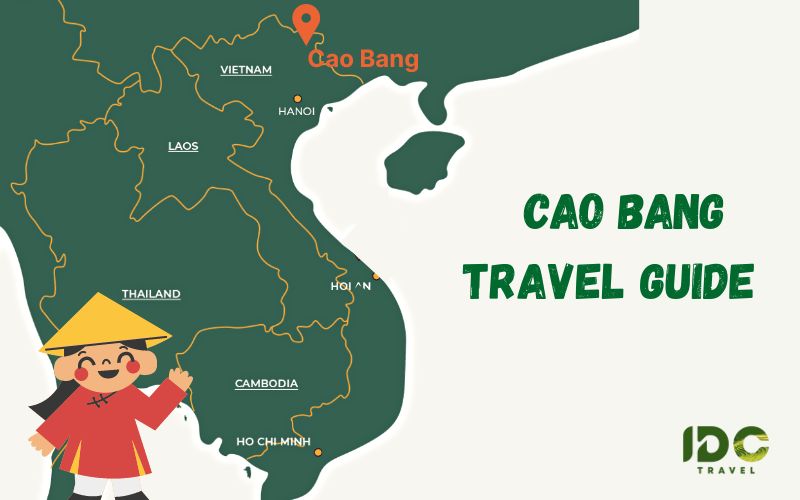
Cao Bang location
Cao Bang is a border highland with primarily mountainous terrain and little livable land. More than 90% of the province’s land is covered in mountainous forests. The province is divided into three distinct regions: an eastern region with many rock mountains, a western region with mountains made of limestone, and a southwest region with earth mountains and thick forests. The province’s most well-known natural attraction is the Ban Gioc Waterfall. The two largest rivers in the region, the Gam River in the west and the Bang River in the center have created the Peninsular valley of the Cao Bang Province. Additional rivers include Quay Son, Bac Vong, Nho Que, Nang River, and Hien River.
Ethnic Minorities in Cao Bang
Cao Bang is the home of many ethnic groups, including Viet (Kinh), Tay, Nung, Dao, H’mong, and San Chay, who form a colorful picture of traditional culture. Tay people make up the majority of the ethnic minority community. They have their own style of writing (Tay-Nung language group).
Cao Bang Weather and Best time to visit
Cao Bang has four distinct seasons: spring, summer, autumn, and winter. Summer temperatures range between 25oC and 28oC, while winter temperatures range between 16oC and 17oC. Snow is most likely falling on high mountains such as Trung Khanh and Tra Linh.
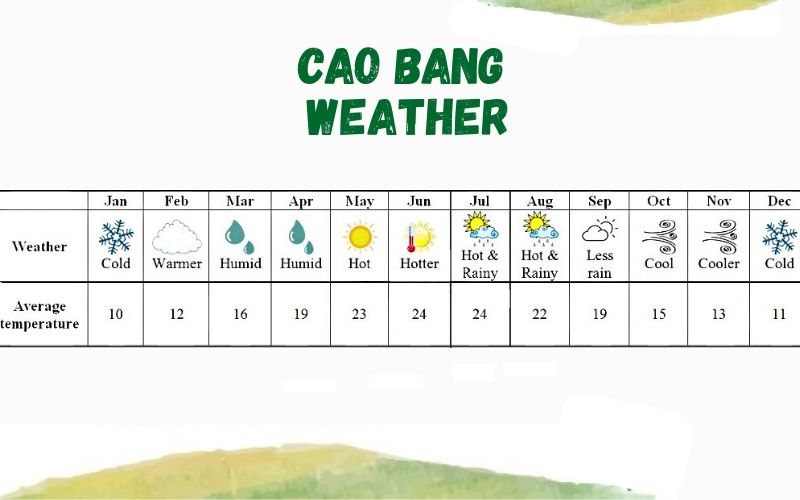
Cao Bang Weather and Best Time to visit
However, because the land is primarily endowed with magnificent outdoor scenery of forests, mountains, and natural destinations, the best time to visit Cao Bang is from October to April. It’s worth noting that North Vietnam can get quite cold from November to February, so dress warmly.
Getting to Cao Bang
There are several bus companies that offer services to Cao Bang in the morning and evening. The ticket price ranges between VND 160,000 and 200,000 dongs, and the journey takes approximately 6-8 hours to Cao Bang. When you arrive at Cao Bang’s bus station, you can either take a taxi or a motorcycle to your destination or take the bus. We highly recommend hiring a car so you can travel faster and stop at wherever you want.
Getting around Cao Bang
How to get to Ban Gioc Waterfall
You can take a bus or a motorcycle to get to Ban Gioc waterfall. It is best to inquire about the bus schedule at the bus station or at the hotel. Some people may choose to rent a motorcycle in order to be active and explore fascinating places along the way.
How to get to Ba Be National Park
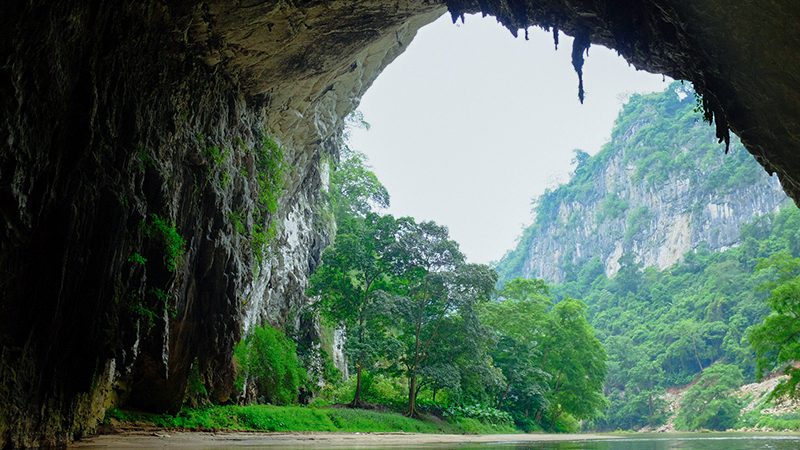
Ba Be Lake
The distance between Cao Bang town and the park is approximately 130 kilometers. You can buy a bus ticket to Phu Thong from the bus station or your hotel, then take another bus to Cho Ra town, which is about 10 kilometers from the park. From there, take a motor taxi to Ba Be National Park. Aside from that, you can rent a motorcycle and travel independently using a map.
Where to Stay in Cao Bang
Cao Bang has a limited number of hotels. Local hotels in Cao Bang are very affordable, ranging from $10 to $20 USD per room per night. It is strongly advised to book hotels in advance. Here are some good places to stay in Cao Bang:
In the city center
- Duc Trung Hotel
Address: No. 85, Be Van Dan Street
Phone number: 03853 026 424
- Bang Giang Hotel
Address: No. 2 Kim Dong Street
Phone number: 026 431 3853
- Hoang Anh Hotel
Address: No. 131, Kim Dong Street
Phone number: 03858 026 969
- Anh Duong Hotel
Address: No. 78, Kim Dong Street
Phone number: 03858 026 467
- Hoang Long Hotel
Address: No. 51 Kim Dong Street
Phone number: 03855 026 178
In Trung Khanh District
- Le Hoan Guesthouse: 026.826221 / 0915425531
- Thien Tai Guesthouse near the market: 026.3826537
- Dinh Van Guesthouse near the market: 026.3602789
Near Ban Gioc Waterfall
- Van Dinh 2 Guesthouse: 0263.82.80.82
What to See in Cao Bang
Ban Gioc Waterfall
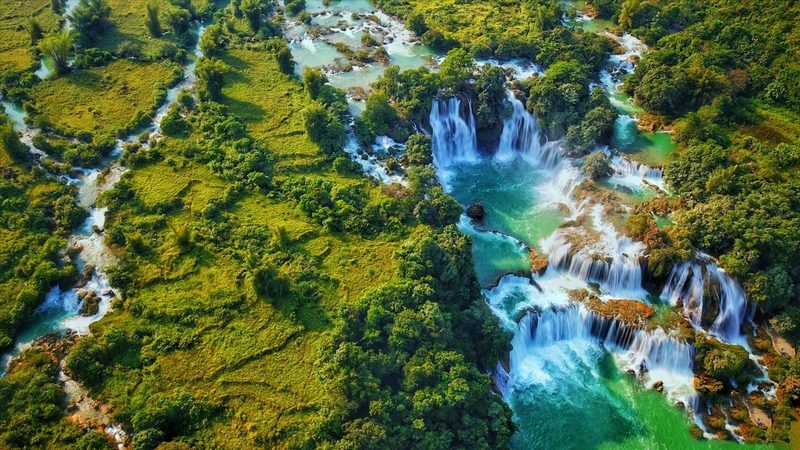
Ban Gioc Waterfall
Ban Gioc Waterfall, which stretches along the border with China, is without a doubt the most popular attraction in Cao Bang, ranking fourth in size among the world’s largest waterfalls. It is a must-see natural landscape when visiting Vietnam. Ban Gioc Waterfall is more than 200m wide, and the water falls from a height of 70m in three sections, creating an imposing and poetic scenery and a mighty roar echoing across the land like a call from the past. The cascading water set against the back of the massive mountain is an enthralling sight.
Nguom Ngao cave
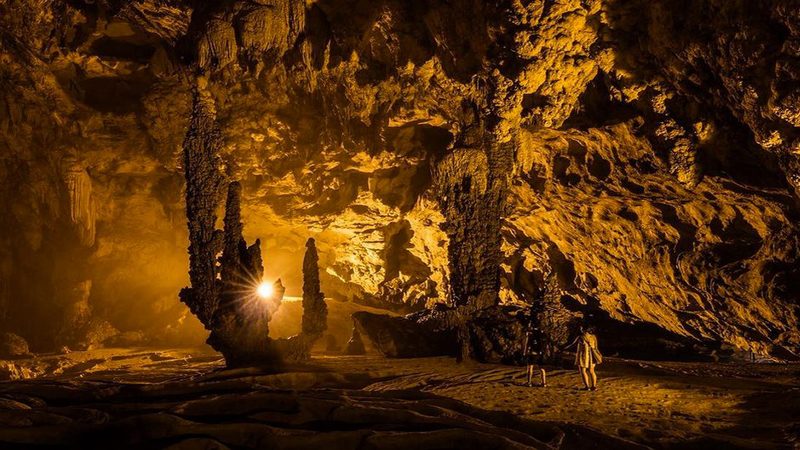
Nguom Ngao Cave
The discovery of Ban Gioc Waterfall and Nguom Ngao Cave is an unmissable combination for a trip to Cao Bang. Nguom Ngao Cave is about 2 kilometers from Ban Gioc and has three entrances: Nguom Ngao, Ban Lom Nguom Nguom, and Ban Lom Nguom Nguom. Stalactites and stalagmites of various shapes and sizes abound in the cave. Their shapes emerge from the cliff face, depicting mythical creatures or magical scenes.
The name itself comes from the Tay language which roughly means ‘Tiger Cave’. Tay people believe that tigers used to live in the cave and catch pets. People exploring the cave were taken aback by the incredibly beautiful rock formations.
Thang Hen Lake
Thang Hen Lake is a freshwater lake in a peaceful valley surrounded by rocky and forested mountains in the commune of Quoc Toan, Tra Linh district, Cao Bang province.
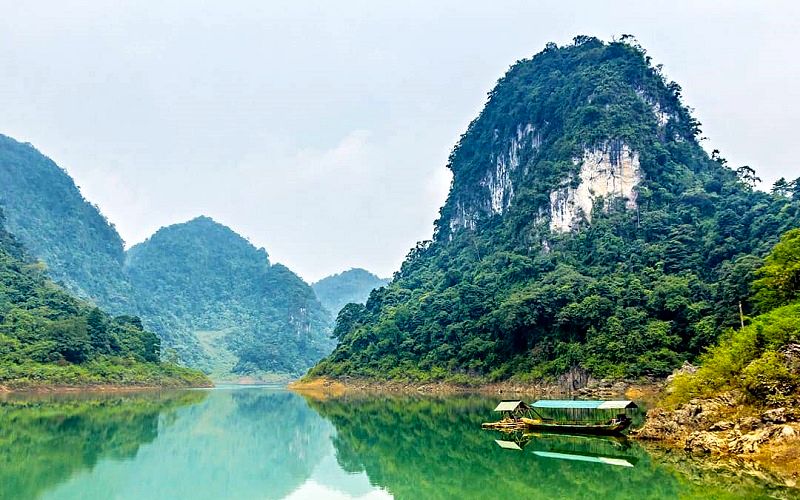
Thang Hen Lake
Tay’s language name for the lake means “bee tail,” because the lake resembles a bee tail when viewed from above. The brightness of the sun appears to deepen the blue-turquoise and green trees on sunny days. When visiting Vietnam, visitors can take a trip around the lake on small wooden boats waiting on the shores.
Pac Bo Cave
This cave has a special historical significance in Vietnam’s national revolution. The relic is located in the commune of Pac Bo in the Ha Quang district, or 55 kilometers north of Cao Bang.
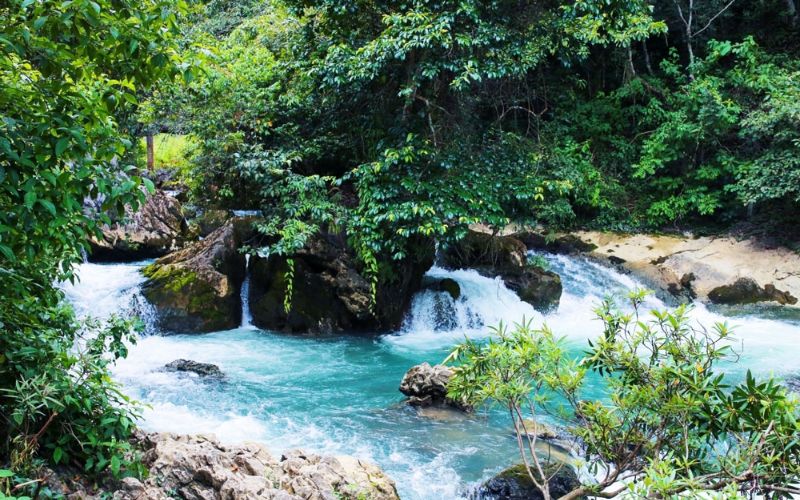
Pac Bo Cave
Visitors can learn about a heroic period in Vietnam history by visiting the memorial house of Uncle Ho, Pac Bo cave, Lung Lan cave, Cave of Nguom Vai source of Lenin, the Stone table where Uncle Ho worked, and so on.
Uncle Ho used to spend his days writing poetry and reading and translating the writings of leaders he respected.
What to Eat in Cao Bang
1. Peng Ray
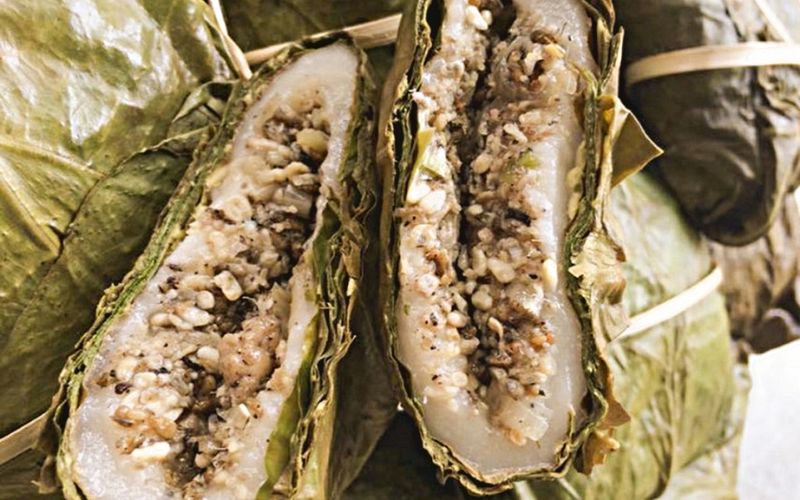
Peng Ray
Banh trung kien, also known as ant’s egg rice cake, is a dish prepared by the Tay ethnic people of Cao Bang and other mountainous provinces in northern Vietnam. In Tay’s language, Peng Ray means egg cake. It is a seasonal food for the Tay people of Cao Bang. Tay people usually go to the jungle in April or May to collect ant eggs, which they then bring back and use to make a delicious cake. Flour, ant’s eggs, minced pork, dried onion, sesame, and ground peanuts are among the ingredients. The filling is encased in glutinous rice flour dough, wrapped in va, or fig, leaves, and steamed for 45 minutes. The fat of eggs, the flavor of onions, and the fresh taste of fig leaves all impress visitors.
2. Sour pho of Cao Bang
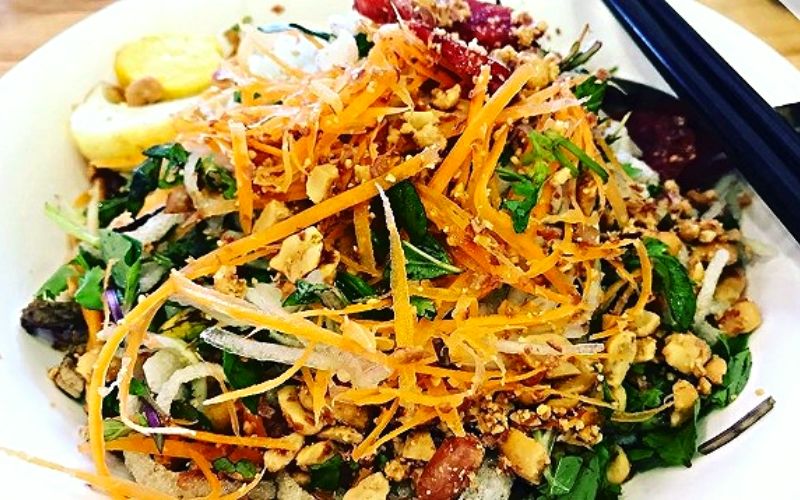
Cao Bang sour noodles
Cao Bang’s specialty is Cao Bang Sour pho (Noodle Soup). The ductility of the noodle combines with the bacon fat, duck, and other seasonings and herbs. After three times eating it, appetizers can become addicted to it.
3. Trung Khanh chestnut
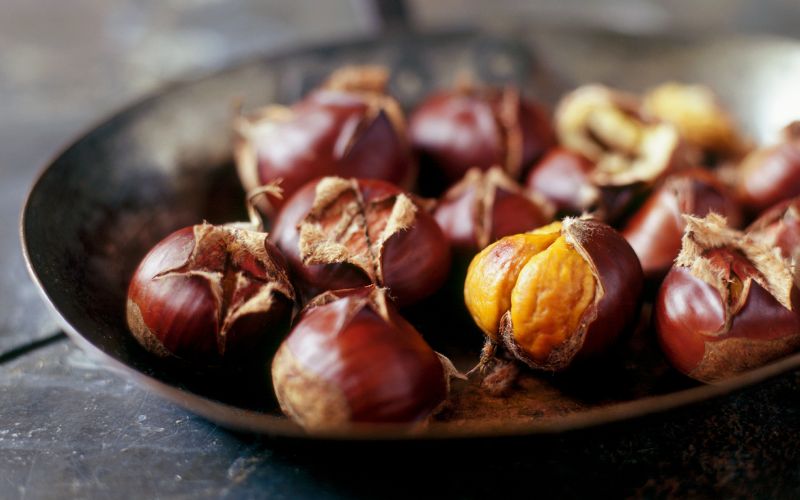
Trung Khanh chestnut
Trung Khanh is well-known for producing the most delectable fruits in the country. You will be able to try this food if you visit Cao Bang in late autumn. Chestnut is a brown, plump tree. The smallest one has hard shells like the big toe. It can be boiled, steamed, or cooked to preserve the natural scent.
4. Steamed rice rolls
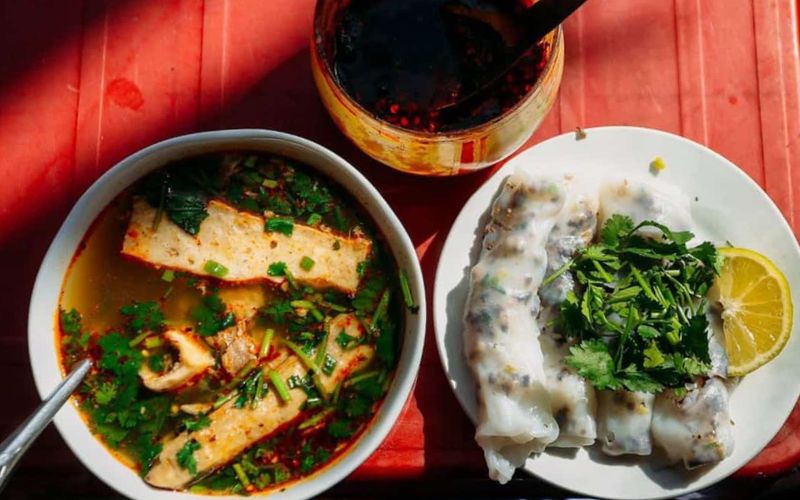
Steamed rice rolls with soup
Cao Bang’s banh cuon, or steamed rice roll, comes with a bowl of bone broth containing Vietnamese pork bologna or cha lua and egg, rather than the small bowl of fish sauce found elsewhere in the country. As a result, to distinguish it from its cousins in other areas, the dish is also known as soup steamed rice rolls.
We hope the information in the article will be helpful to you. If you want to have more information and ideas to build an unforgettable itinerary in Cao Bang, do not hesitate to contact us!
